Top Tips to Care for your Lease Vehicle
When taking out a new car lease deal, it is essential that you take care of the car and maintain it in the best way possible to help avoid any end-of-lease penalty charges when returning the vehicle.
To help you better understand your obligations, stock car leasing specialist, Nationwide Vehicle Contracts, has put together a comprehensive guide with our top tips for maintaining your lease vehicle, including advice on its appearance, mechanics, tyre safety and overall vehicle security.

Jump to our quick “How to” car maintenance tips below for easy, practical advice:
Why is regular maintenance important?
As part of your car leasing agreement, you must return the vehicle in good condition, also known as fair wear and tear. While each finance company provides its own guidelines for acceptable wear and tear, based on the vehicle’s age and mileage, these guidelines are based on the BVRLA standards. If you exceed these standards, you will be liable to pay for any damages.
The most effective method to avoid end-of-lease penalty charges is to keep on top of the vehicle’s maintenance and appearance throughout your lease period. Conducting regular checks on the vehicle can help identify any minor damage on the vehicle which if left unresolved, can lead to bigger issues, eventually leading to costly repairs or unwanted penalty charges at the end of your lease deal.
You can read more about return standards in our fair wear and tear guide.
How often should I be maintaining my vehicle?
You should set aside 10-15 minutes every few weeks to check your vehicle over. Necessary tests such as checking oil levels and vehicle lights should be checked every couple of weeks or before a long journey to ensure vehicle safety. Other checks should be carried out by an accredited servicing outlet to ensure safety standards are met.
It is advised that you take your car to a garage every six to 12 months, depending on how often you drive. A mechanic can make sure your lights, steering, brakes and tyres are all working correctly. Some outlets, such as Kwik Fit, offer free vehicle inspections for added peace-of-mind and to highlight potential concerns that should be addressed either now or in the near future.
If you are worried something is wrong with the vehicle, never hesitate to take it to a professional as it's better safe to be on the safe side.
“With the cost of living rising in the UK, it is no surprise that drivers are looking for ways to keep their costs down. Performing regular maintenance to your lease vehicle can be an easy way to help reduce costs.”

What type of maintenance should I be doing on my lease vehicle?
Regular maintenance should be carried out to the following areas:
- General appearance including paintwork, body, bumpers and trim
- Windows and glass, including windscreen and door mirrors
- Screenwash and windscreen wipers
- Vehicle Interior
- Mechanical components such as engine oil, lights and indicators
- Tyres and wheel pressure, tread and depth
- Vehicle security including keys and alarms
All of these checks can easily be carried out at home, but if you notice something wrong with your car and you're not sure what it is, don't hesitate to book a service and have it looked at by a professional.
General Appearance
Firstly, it is advised that you clean the exterior of the vehicle every couple of weeks. Frequent cleaning of the exterior not only ensures the vehicle looks good but helps to prevent minor damage. Dirt that is left unwashed can cause your car to scratch, paint to fall off or lead to rust forming on the vehicle and wears the protective coat off which can cause the colour to fade over time.
Polishing the vehicle exterior around four times a year will also help reduce the effects of any stone-chip damage, limit the effects of air-borne contamination (e.g. bird droppings), remove traffic grime and make routine washing easier.
Paintwork, body, bumpers and trim
Walk all the way around the vehicle, checking each panel at a time for significant damage. Damage such as chips, dents, and scratches should be repaired as soon as possible after it occurs. This is vital as when the paintwork is damaged, this can cause corrosion to the vehicle.
Rust is a big problem on cars as it damages bodywork and, if left untreated, can cause severe problems. All bodywork must be done to a professional standard by repairers who provide a full warranty on their work.
If you have taken out a maintenance contract when negotiating your lease deal, it is important that you speak to your finance provider in the first instance as they can advise you and authorise any repairs that may be required.
Decals, badges and labels
Many businesses want to add custom stickers, logos and company decals to their lease vehicle, particularly if the vehicle is used by the company on a day-to-day basis, however, advertising decals, badges, labels or stickers should never be painted directly onto the vehicle without the finance provider’s permission.
As custom vehicle decals are easy to apply and simple to remove, most finance providers will allow you to add them to the lease vehicle provided that you remove them at the end of the term and before the vehicle is returned. If you have permission to do so, the decals should be fitted so that they can easily be removed without damaging any part of the vehicle's paintwork.
Windows and glass
Once the vehicle has been cleaned, take the time to inspect all lamps, windows and mirrors for any chips, cracks or holes. All vehicle glass should be kept clean and have regular maintenance to enable any damage to be identified quickly, and repairs can be dealt with accordingly.
Windscreen and windows
Firstly, walk around the vehicle to check for any chips, cracks or holes that can be seen from the outside. Then sit inside the vehicle and complete the same checks. Don’t forget to check the panoramic sunroof if applicable. While light scratching on the windscreen is acceptable, any damage in the driver's direct line of sight should be repaired immediately as this can hinder the structure of the window in a severe accident. Chips, cracks or holes are not acceptable.
To make sure you’re keeping the car’s windows in the best condition, spray a window cleaner solution on the vehicle's windows and wipe clean with a microfiber cloth or a paper towel to make sure you have perfect vision out of the windows.
Door mirrors
Door mirrors are prone to gathering moisture and must be cleaned regularly to stop dirt from forming. Any cracks and bulls-eye damage must be repaired to avoid further damage. Adjustable and/or heated door mirrors must also be checked to ensure they work correctly.
Spraying a window cleaner solution on the vehicle's door mirrors and wiping them clean with a microfiber cloth or a paper towel helps keep the mirrors in excellent condition, allowing you to see correctly when manoeuvring.
Screenwash and Windscreen Wipers
Next up, it's time to check that your vehicle’s screenwash is topped up and that your windscreen wipers are in good condition.
Screenwash
Before topping up your screenwash, be sure to check your owner's manual for how much fluid your washer reservoir holds as you don't want to overfill.
How to top-up your car’s screenwash

1. Park on level ground
Make sure you have parked your vehicle on level ground and not on an incline.
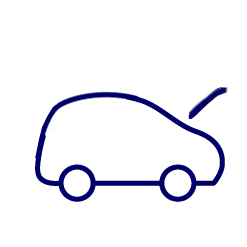
2. Open car bonnet
Open the car's bonnet, locate your washer fluid cap, and pop it open.

3. Check levels
Check the screenwash level on the side of the tube.

4. Pour in screenwash
If the levels are low, pour your washer fluid in a little at a time and recheck the level.

5. Close bonnet
Place the cap back on and close the bonnet.
Windscreen wipers
Windscreen wipers must be present, secure and in good condition. The rubber on the wiper blade hardens over time and can break up, which might mean the blades need to be replaced.
The best way to check your windscreen wiper is in working order is to raise the arms so that the wiper blades are clear of the screen. Run your fingers along the rubber blade of the wiper. It should be smooth to the touch. If a replacement is required, you can easily do this yourself or take it to a local garage if you’d prefer.
Vehicle Interior
Now that you have completed the external checks, it’s time to move onto the vehicle’s interior. According to a recent survey, we spend an average of 293 hours in our cars per year so keeping it clean and fresh is essential.
The same also applies when it comes to returning your lease vehicle at the end of its contract. There shouldn't be any stand out stains or odours inside the car and all materials must be free of tears, burns or rips.
While deep stains may need to be cleaned by a professional valet, most drivers can ensure their car’s interior is kept tidy and fresh by following the process below.
How to clean your car’s interior
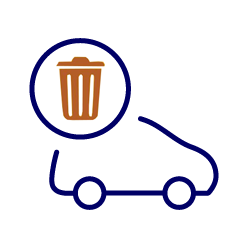
1. Remove the rubbish
Start by removing any rubbish from the footwell and underneath the seats. Throw away any bottles, wrappers, toys, and other objects that your vacuum won't pick up.
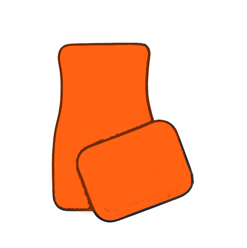
2. Clean the mats
Next, lift your car mats out from the car and shake them out as much as possible. Scrub the mats with hot water and soap or a foaming carpet cleaner and allow them to air dry thoroughly before putting them straight back in the car.

3. Vacuum the seats
Then vacuum the front and back seats, the floor and, if necessary, the boot. Try and vacuum everywhere in the vehicle where you can get the nozzle, including under the pedals and along the side door panels to get rid of unwanted dirt.

4. Wipe the dashboard
Wipe away any grime and dirt on the dashboard and steering wheel using cleaning wipes or a soft cloth to wipe up all the dust and get rid of any sticky mess. You can also use trim and dash cleaner to make your car look shiny and new.

5. Clean the windows
Spray a window cleaner solution on the vehicle's windows and wipe clean with a microfiber cloth or a paper towel to make sure you have perfect vision out your side windows.

6. Add a car air freshener
After completing these steps, your car should begin to start smelling a lot fresher and cleaner; however, to get rid of any stubborn smells, invest in a good car air freshener that gives off a fresh scent in the vehicle.
Mechanical Components
Now is time to move onto the mechanical components of the car such as checking the engine oil, lights and indicators.
Engine oil
It's essential that you never check your engine oil readings if you've just driven your vehicle, as working with hot oil is incredibly dangerous. If so, wait a couple of hours for the engine to cool before checking.
How to check your car’s engine oil levels

1. Park on level ground
Park your vehicle on level ground as if your car is on even the slightest incline it can give an inaccurate oil reading.
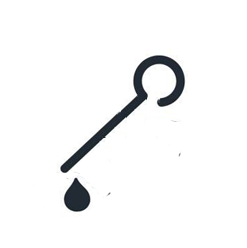
2. Look for oil dipstick
Once you have opened the vehicle's bonnet, look for the coloured plastic handle of your dipstick, remove it and wipe it clean.

3. Check the oil level reading
Push the clean dipstick back into its tube and wait a couple of seconds. Pull it back out and check the oil level readings. The top of the oil streak should show between the minimum and maximum marked levels. If the oil streak isn't between the marked levels, then you need to add some oil.
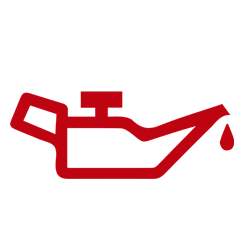
4. Top up oil if required
If your vehicle requires oil, find the oil filler cap located in your engine bay. Take the oil cap off and carefully pour your oil in using a funnel. If you don't know how much you need, keep adding a little at a time. Wait a moment for the oil to run down into the engine and recheck the level on the dipstick. Be careful as putting too much oil into your car is just as bad as having too little, so take care during this process.
Headlights
Check the headlights for beam strength as they lose their power over time. If a bulb does need replacing, never change, just the one. Bulbs should be replaced as pairs to prevent one of your lights from being significantly brighter than the offer.
How to change your car’s headlight bulbs
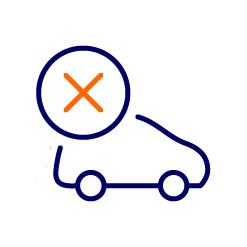
1. Switch engine off
Turn the vehicle engine off.

2. Lift the bonnet
Lift the bonnet of the vehicle and locate the headlight holder.

3. Disconnect old headlight bulb
Disconnect the headlight bulb power wires. Usually, three wires are attached to the lightbulb push down on the clip or cap, holding them in place.
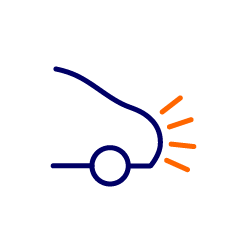
4. Screw in new bulb
Gently unscrew the old headlight bulb and replace it by screwing in your new bulbs.
It's important to understand that every car is different and therefore may have a different process to replace the headlight bulbs. If unsure, get your vehicle looked by a professional or use a service like Kwik Fit’s bulb replacement service where they can do it for you, for a small fee.
Dashboard Lights
When you start your car's ignition, you may notice some or all of your dashboard indicator lights will illuminate when you do this. This is normal but if one light stays on for longer than the others, it's time to do some investigation work.
Take the time to get to understand what each light on your dashboard is for and how you should react to each of them, so you're not caught by surprise if one comes on while you're driving. You should regularly pay attention to any messages and/or lights that pop up on your dashboard as they usually indicate any vehicle issues.
Indicators
Finally, take the time to check your indicators are working properly. The best way to check your indicators are in working order is to press the hazard warning light switch and walk around the vehicle, inspecting each light is working correctly. If there is an issue with the indicator, it's vital to get it resolved as quickly as possible.
Tyres and wheel pressure
Next up, it's time to check your tyres and wheel pressure to ensure they are of a safe and legal standard.
Tyre pressure
Before you check your vehicle's tyre pressure, it's essential to look at the manufacturer’s recommended PSI to ensure no tyre is under or over-inflated. You can usually find this information in your owner’s manual or online.
How to check tyre pressure

1. Check current pressure
Remove the valve cap and insert the pressure gauge onto the valve. Make a note of the reading and repeat for the other tyres.

2. Check if tyre is over-inflated
If the tyre is over-inflated according to your vehicle’s recommended PSI you can let some air out.

3. Top up the pressure
If the tyre pressure is under the recommended PSI, you need to refill the tyre.

4. Fill to the correct PSI
Press the air compressor hose onto the valve and fill until the correct PSI is shown on the gauge.
Tread depth
Regularly checking your tyre tread is vital as having worn tyres means you have less control of your tyres on the road, which in turn, can cause a severe accident. Having the incorrect tyre depth can also put you at risk of getting a hefty fine. The legal tyre tread depth for cars in the UK and Europe is 1.6mm across the tyre's central three-quarters. The tread of the tyre also must meet this minimum requirement across its complete circumference.
How to check tyre depth

1. Use a 20p coin
Place a 20p coin into the main tread grooves of your tyre.

2. Check the tyre thread
If you can't see the raised edge around the coin, your tyre's tread is probably greater than 1.6mm and, therefore, legal.

3. Ensure tyre is safe
If the outer band is visible when inserted, your tyre could be unsafe and may require a professional inspection.

4. Take multiple measurements
Cornering and alignment can cause the tread across the tyre to wear at different rates, so remember to take multiple measurements across the tyre's central three-quarters.
Vehicle security
Finally, take the time to check that your vehicle’s alarm system is operational and to check you have all keys - including any spare - in a safe place.
Vehicle keys
Always keep your key in a safe and secure place with the spare key stored in a different location. You will be charged for replacement keys if they are not returned with the vehicle at the end of the vehicle contract. Don't leave keys in a prominent place in the house and certainly never in the hallway in reach of the letterbox.
Security system
All security systems equipped after manufacture should meet the applicable Thatcham standard and be fitted according to a recognised standard, e.g. Vehicle Systems Installation Board (VSIB).
To keep your lease car as secure as possible, check out our guide on Keeping Your Vehicle Secure, where we provide expert advice on how to keep your lease car safe for the duration of your contract.
For more information and tips on taking care of your lease vehicle, check out our comprehensive motoring guides or call Nationwide Vehicle Contracts on 0345 811 9595 for expert advice.
Guide Information
Originally published: 11th March 2021
Last updated: 26th November 2024
